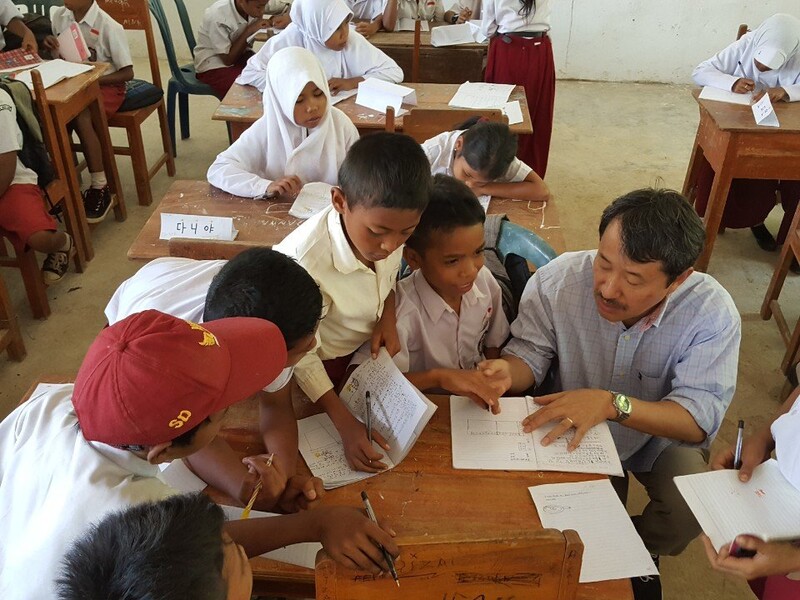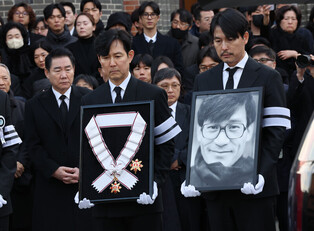 |
| ▲ Chung Deok-young, known as the “Hangeul evangelist,” teaches the minority Cia-Cia language using Hangeul textbooks on Indonesia’s Buton Island. The photo, provided by Chung, shows a Hangeul class for 4th-grade students at Karyabaru National Elementary School in Baubau City in April 2018. (PHOTO NOT FOR SALE) (Yonhap) |
SEOUL, Nov. 6 (Yonhap) -- The New York Times (NYT) spotlighted the Cia-Cia tribe, an Indonesian ethnic minority that adopted Hangeul in 2009 to document their native language, as a remarkable case of preserving cultural identity.
NYT reported on Wednesday, "The language of Indonesia’s Cia-Cia people has been orally transmitted for centuries. Now, children of the tribe are learning to write it using Korea’s Hangeul," covering the educational strides made in the Cia-Cia community due to Hangeul's implementation.
The Cia-Cia language, spoken by approximately 93,000 people on Indonesia’s Buton Island, had no writing system and was primarily passed down orally. Like many of Indonesia's 700 minority languages, it was in danger of being overtaken by the national language, Bahasa Indonesia.
Buton Island sociologist La Ode Alirman emphasized the risks of losing a native language, saying, "When a language becomes extinct, the identity, the local wisdom of that tribe will also disappear." In response, Korean scholars initiated the dissemination of Hangeul in 2009, noting that the Cia-Cia language’s syllabic structure aligns with Hangeul's phonetics.
Fifteen years later, Cia-Cia children now learn their ancestral language in school using Hangeul, with dedicated textbooks. In Sorawolio Village in Baubau City, where the Cia-Cia primarily reside, names of streets, schools, and public facilities are displayed in both the Roman alphabet and Hangeul.
 |
| ▲ Students from the Cia-Cia tribe on Indonesia’s Buton Island learn their native Cia-Cia language using Hangeul textbooks, in this photo provided by the Korea-Cia Cia Cultural Exchange Association. (PHOTO NOT FOR SALE) (Yonhap) |
The tribe's efforts faced obstacles, such as a shortage of Hangeul instructors, but regained momentum with the publication of a Hangeul-based Cia-Cia dictionary in 2020. The NYT noted that while Korean academia has tried to introduce Hangeul to other language communities without native scripts, the Cia-Cia represent the only enduring success.
Cia-Cia native Abidin, who learned Hangeul in Korea and later introduced it to his community, explained, "We borrow the Hangul to preserve our language. We mix and match the old and modern alphabet and that makes it uniquely Cia-Cia."
Local scholars and elders work to sustain Cia-Cia through Hangeul literacy, striving to record folk tales and traditional knowledge in written form, thus preserving the tribe's identity.
Alirman remarked, "By documenting our folk tales, we get to pass on our local wisdom, the history of our ancestors, our memory and tribe’s identity to the next generation for them to hold on to."
(C) Yonhap News Agency. All Rights Reserved



































